Disk Management¶
GNOME Disks¶
Manipulate partitions, check disk status and more with GNOME Disks.
If you install an additional disk you will have to create one or more partitions on it in order to be able to utilize it. You can do create partitions using GNOME Disks tool.
The most important part is identify your disk. All storage units will be listed on the left sidebar. The disk used as the example is marked with red circle (look at the image). Check the model of the disk (blue circle), its size (orange circle) and ensure it is already empty (does not contain any data, yellow circle):
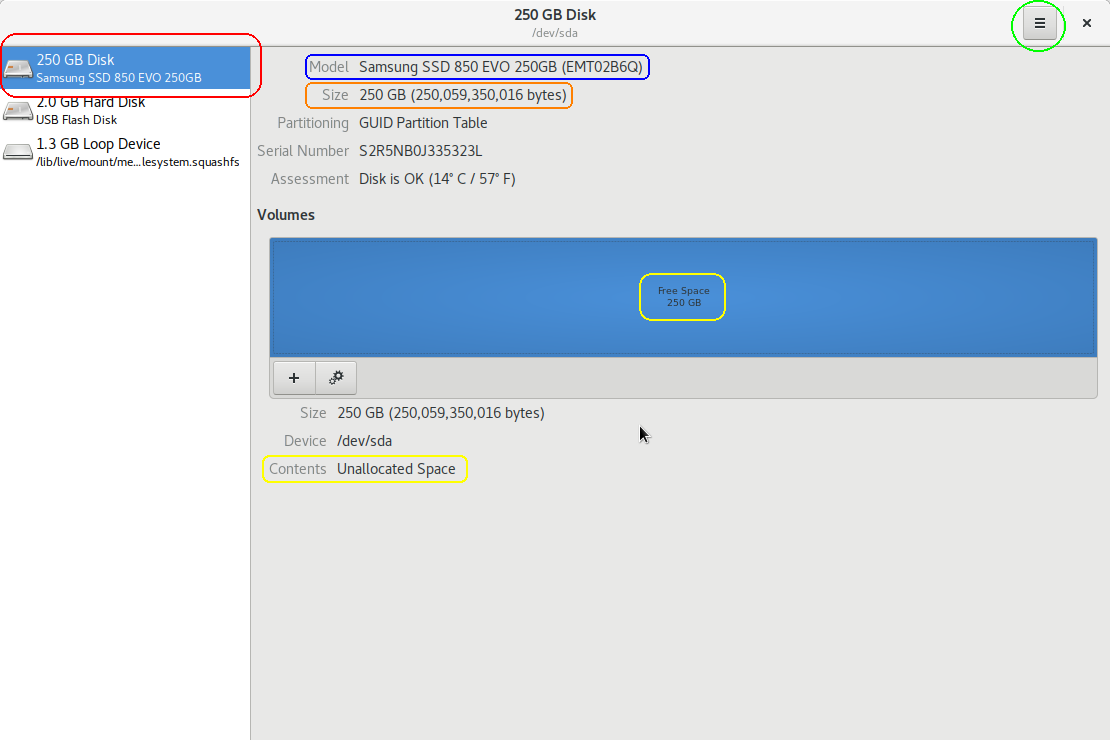
Light green circle is the app’s menu button.
Managing partitions¶
Creating partitions¶
Create partition by clicking the disk’s empty space and clicking the + button:
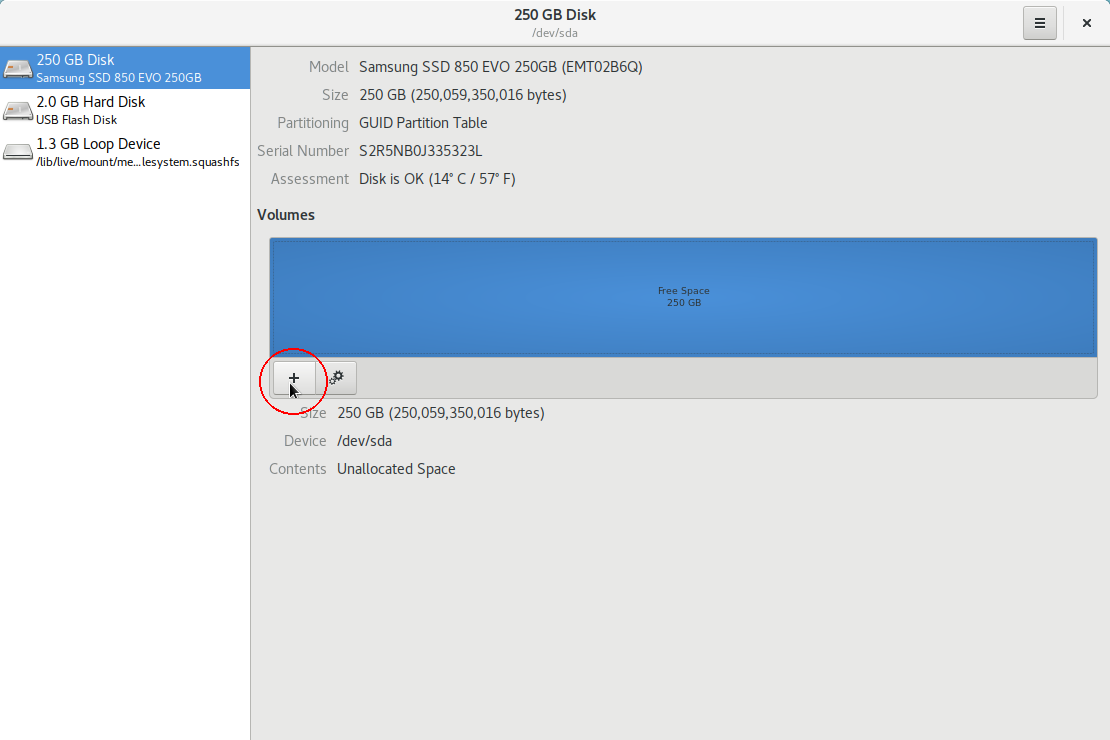
Specify the size of the partition, select the file system and assign some name to it.
In this example, we will use this disk for data storage, hence the name data:
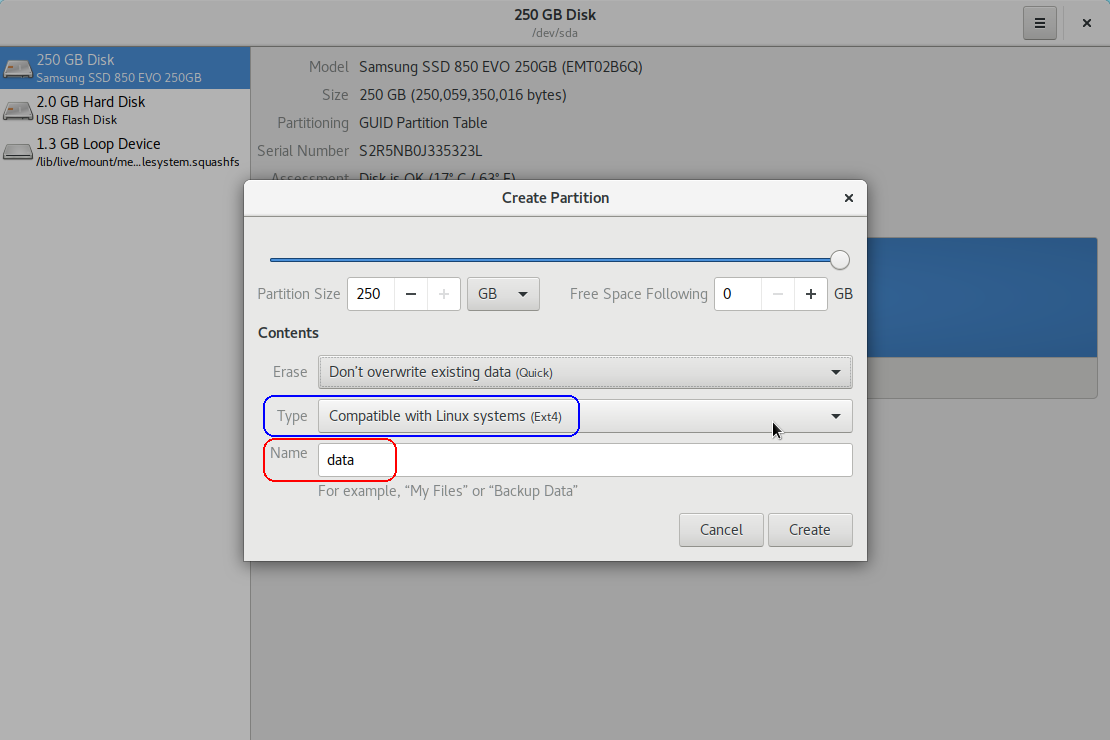
If you want to encrypt the partition, select the appropriate partition type and specify the password:
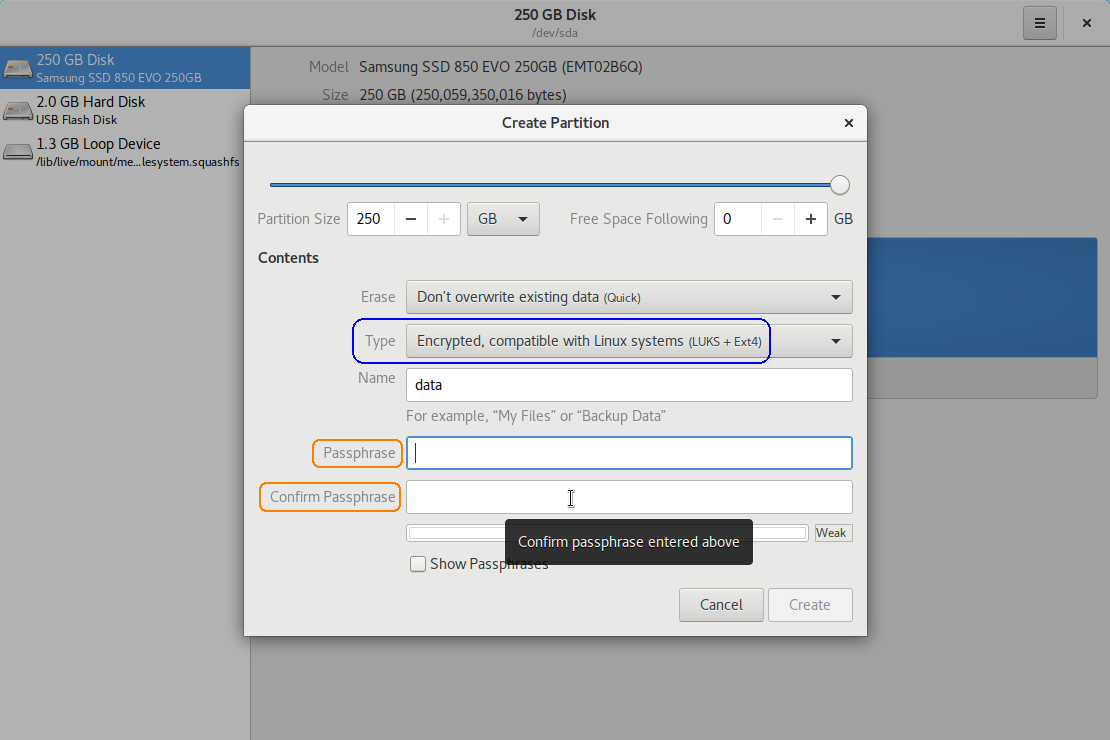
Warning
If you forgot the password, your data will be unrecoverable!
You can also select other partition filesystems, but this should be done if you are experienced user and you know what you are doing:
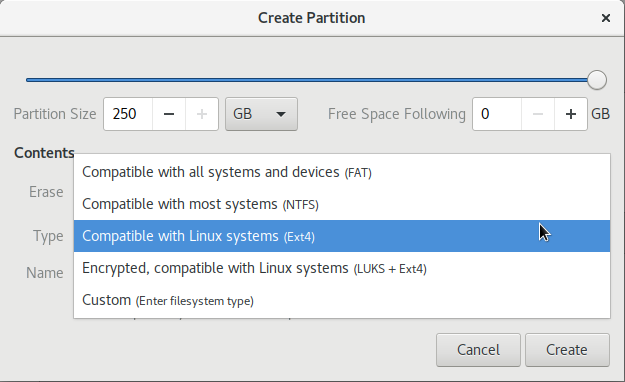
Partition options¶
Once you create a partition you can set up some options for it. Click the options button:

To populate the menu. Menu options are mostly self-explanatory. The most important for you will be how and where to mount your partition:
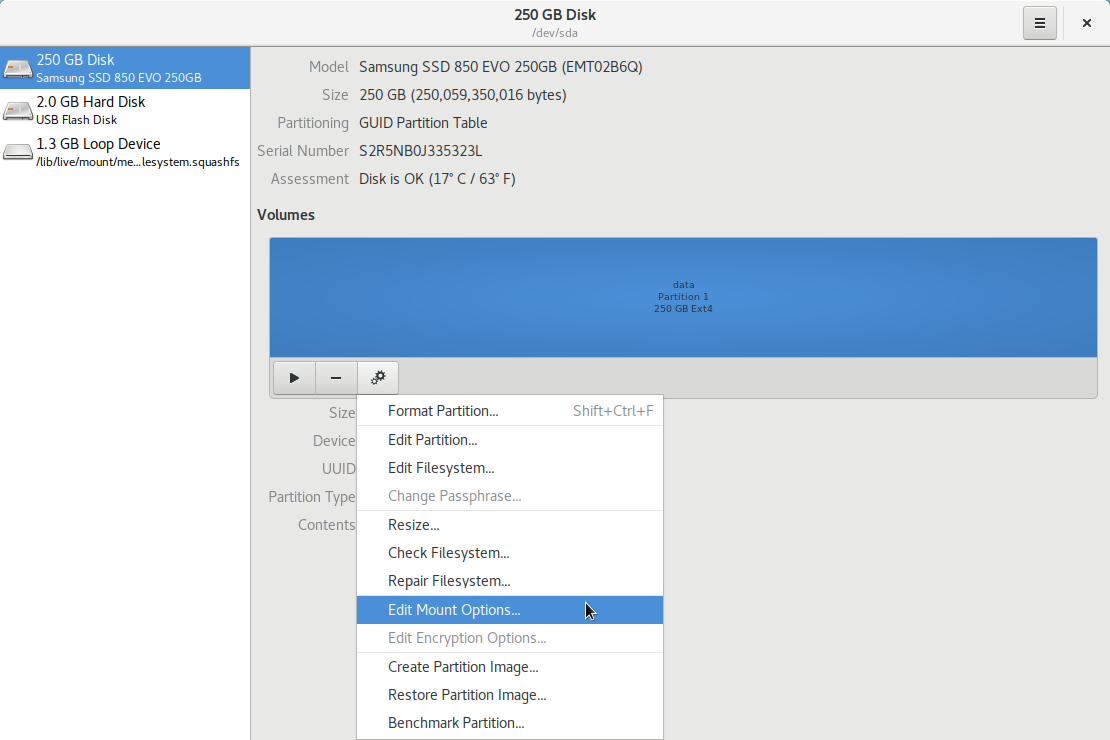
You can safely leave User Session Defaults on, if you care for more control turn this off and edit options.
For example, you can specify Mount Point, for example: /mnt/mydata.
This directory must exist before you try to mount the partition.
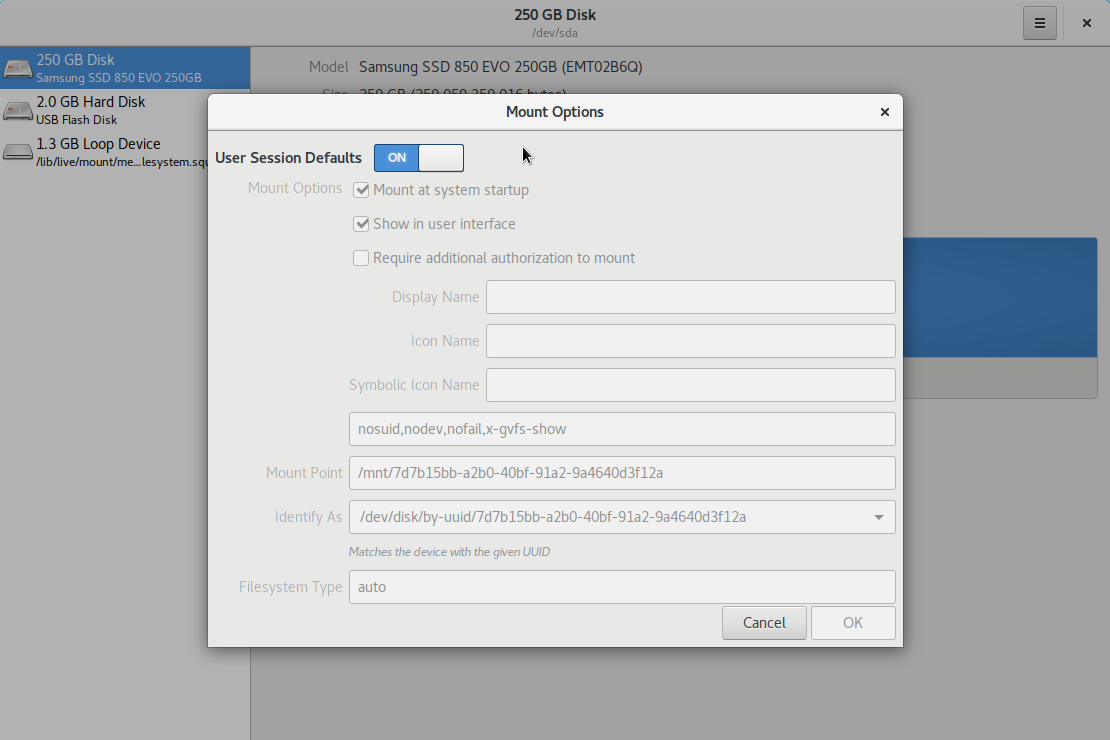
Removing partitions¶
You can remove a partition by simply selecting it and clicking the remove button:
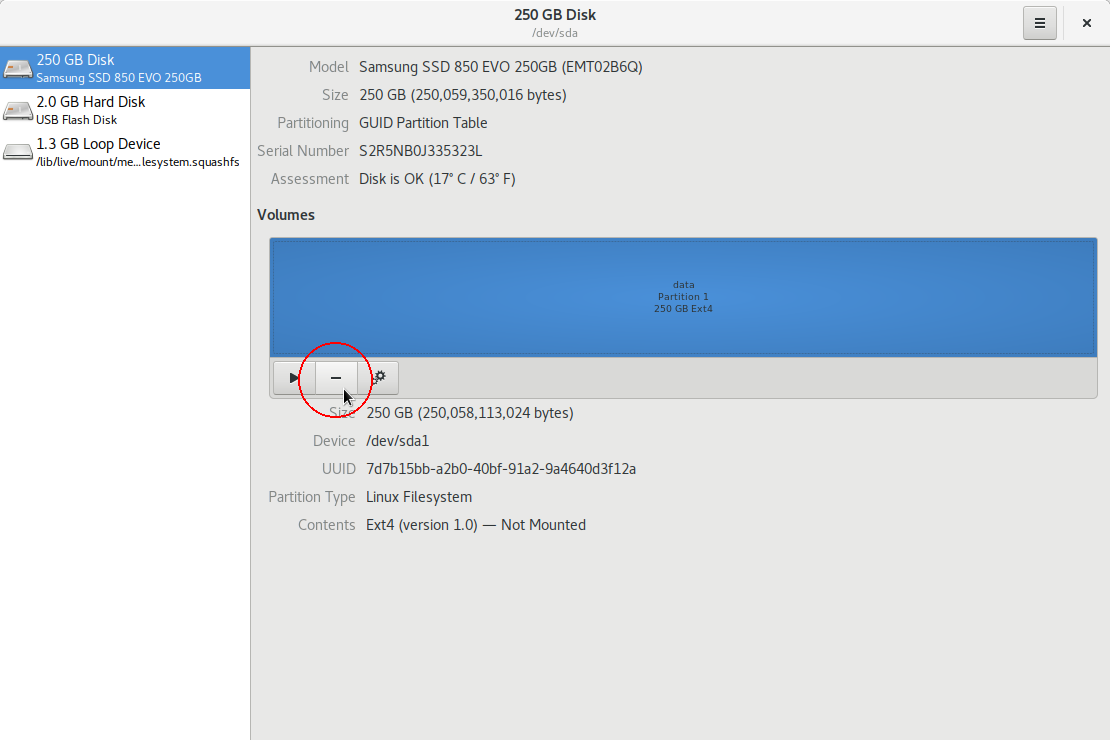
Warning
Removing a partition will also destroy all the data on it!
Mounting partitions¶
Mount a partition by selecting it and clicking the mount button:
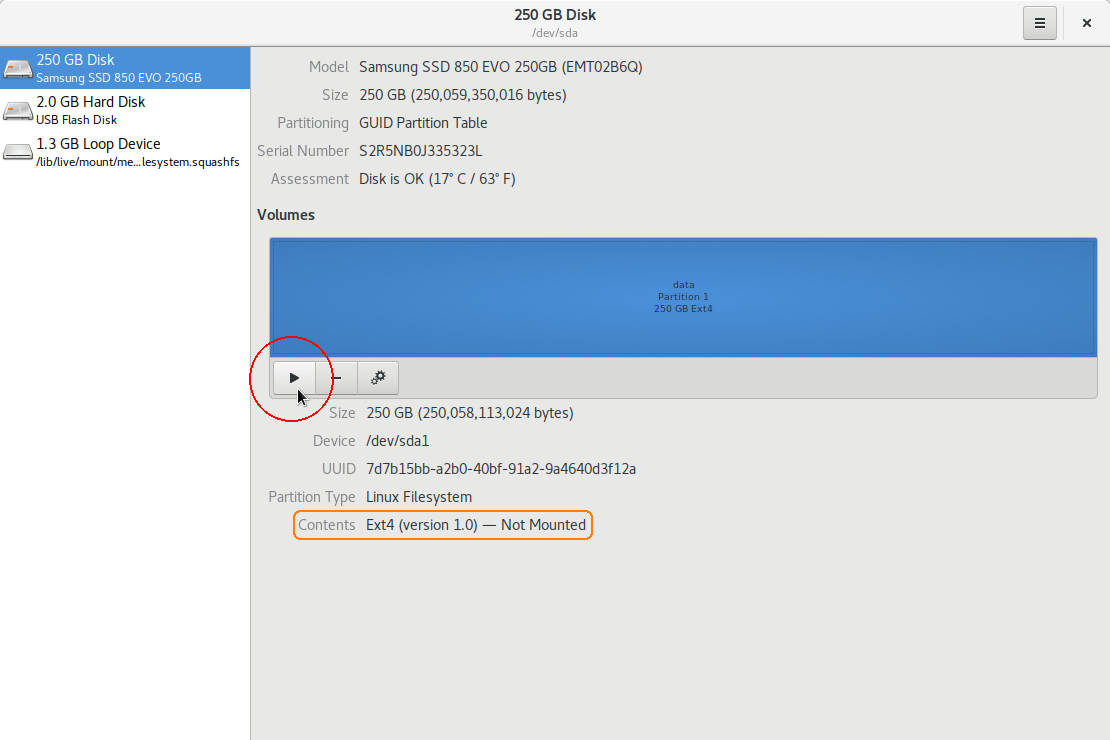
By default, partitions you create will be automatically mounted if you haven’t set them up differently.
Mounted partition can be unmounted by clicking the unmount button (blue circle), but only if none of the programs are accessing the files on the partition. (This means you cannot unmount your system and home partitions.) You can also see in what directory the partition is mounted (red circle):
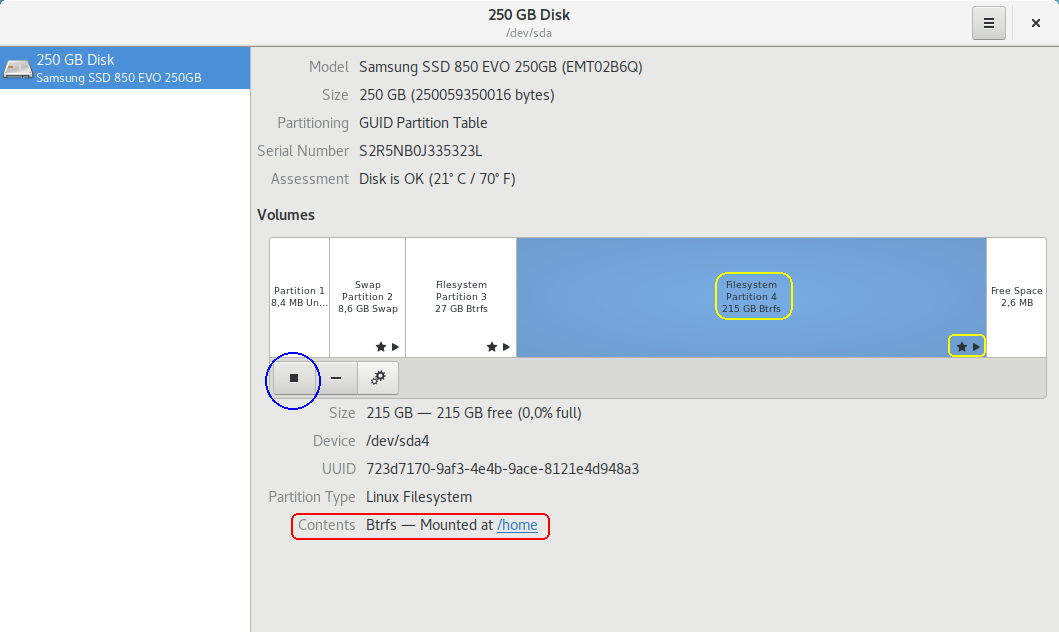
= Disk status =
Check the SMART info of your disk by accessing it from a menu:
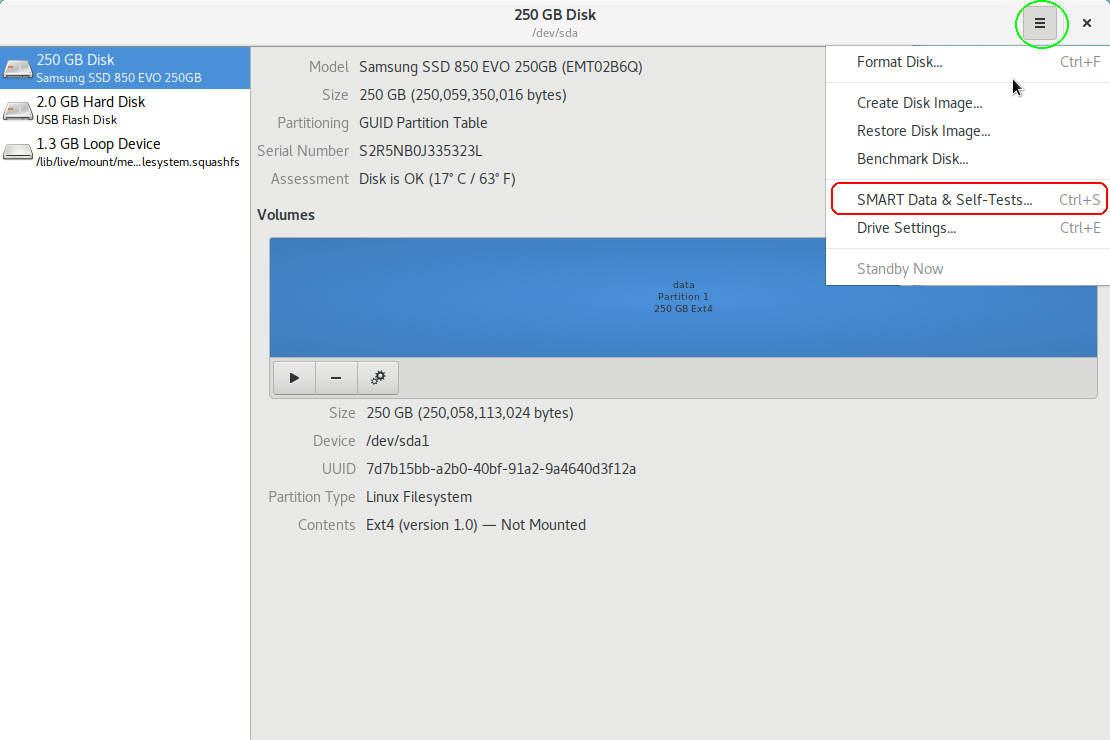
Your disk is working perfectly if all attributes have OK status:
